
It is officially fall, which means… Pumpkin Spice Season! Our furry friends should be able to join us while we enjoy Pumpkin Spice everything!
Pumpkin is a superfood for dogs. It contains essential micronutrients and fibre, making it a very nutritious treat for our pets. Besides being a natural stomach soother, pumpkin also helps to remove excess water in a dog’s digestive tract.
Check out our top 5 favourite pumpkin products for fall that your dogs can enjoy!
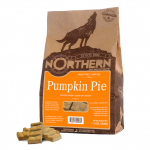
1. Northern Biscuit, Pumpkin Pie Treat
Excellent for sensitive stomachs and overall digestive health, a superfood immune booster! Topped with cinnamon, this vegan recipe is loved by all dogs. Baked in small batches with limited ingredients. At only 18 calories per 5g biscuit, these are perfect for treating, rewarding and bonding with your dog!

2. Crumps Plaque Buster, Pumpkin Spice Treat
Every Pumpkin Spice Plaque Buster contains all-natural pumpkin spice, sweet potato, citrus pulp, and coconut oil. It’s a truly unique treat that assists in turning the scent of your dog’s breath into the smell of a colourful autumn breeze.

3. Oven Baked Tradition, Chicken and Pumpkin Treat
Whether to help with training or simply to make them happy, Oven Baked Tradition Chicken and Pumpkin Treat is an all-natural grain-free soft and chewy chicken & pumpkin dog treat that is low in calories. These chicken & pumpkin dog treats contain real chicken that they simply won’t be able to resist!

4. Big Country Raw Frozen Goat Yogurt, Pumpkid
A decadent frozen yogurt treat your pet is sure to love! Frozen Goat is made with raw goat milk yogurt, fruit puree and agar from 100% natural, thick and creamy treat. Big Country Raw’s frozen yogurt is cold fermented and naturally full of probiotics that are great for your furry friend’s gut health.
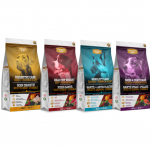
5. Wholesome Blend Grain Free Dog Food
- Digestive Care Turkey & Pumpkin
- Healthy Weight Turkey & Pumpkin
- Mobility Care Salmon & Pumpkin
- Skin & Coat Care Salmon & Pumpkin
Our Wholesome Blend Grain Free line is made with fresh pumpkin. Complete and balanced grain-free diets, providing moderate levels of protein and fat to encourage a healthy weight. Diets that are formulated for all life stages – from puppy through adulthood.
Don’t let your pups miss out on Pumpkin Spice Season! Stop by your local Feeds’n Needs to purchase any of these products.
Sources:
Pumpkin for Dogs: Health Benefits, Harmful Effects, Preparation (webmd.com)
Pumpkin Pie 500g | Northern Biscuit
Plaque Busters with Pumpkin Spice – Crumps’ Naturals Canada
The best, all-natural, and healthiest dog treats | Chicken and pumkin (ovenbakedtradition.com)
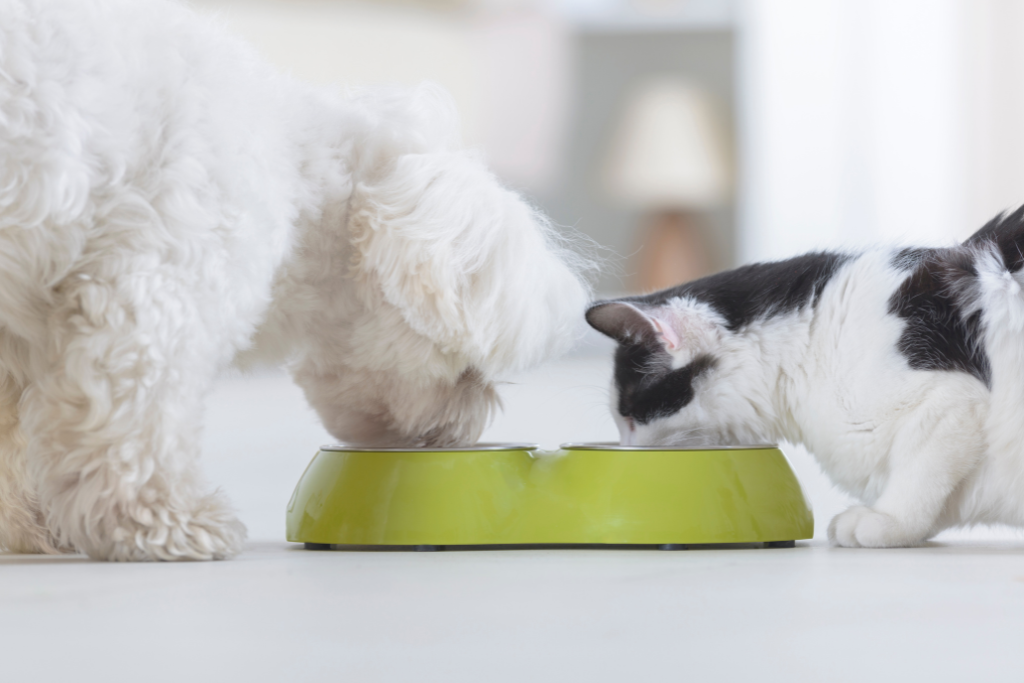

Benefits of a Raw Food Diet
Raw food diets for cats and dogs are becoming more popular! Many people are choosing to feed their pets a raw diet because it is more natural and less processed than kibble. Others feed raw due to the many health benefits of a raw food diet. Here are some of the top reasons you should make the switch to raw:
-
- Joint and Bone Health
The best way to support bones is with bones! Real crushed bone is a natural source of calcium, phosphorus, glucosamine, chondroitin, collagen and marrow. These components result in healthy growth in puppies and maintain superior joint and bone health for your dog throughout its lifetime. - Immune System Support
Raw meat is highly bioavailable and contains live bacteria/enzymes that support digestion and help to absorb almost all the immune-boosting nutrients. Raw food is also naturally rich in moisture, which supports organ health. - Less Stool
Having a diet of highly digestible ingredients for your pet is that more of what goes in is absorbed and utilized within the body – meaning less comes out the other end. Carbohydrates and filler ingredients such as soy, potato, corn and rice take longer to digest and do not fully absorb within your pet’s body. These ingredients can lead to larger stool volume with a heavy odour. Most raw diets contain no fillers and are low in carbohydrates, resulting in less waste passing through and decomposing faster. - Healthy Skin & Coat
Raw diets contain many ingredients that support skin and coat health, one of the most notable being omega-3 fatty acids. Healthy omega fats play a significant role in supporting healthy skin and a soft coat. Some common ingredients that provide essential omega-3 fatty acids include salmon, chia, and flax seeds. After switching your pet to a raw diet, you’ll notice a difference in their skin, coat and even how much less they shed! - Reduced Body Odour
When pets consume food high in fillers, additives, and preservatives, it can lead to unpleasant odours. A raw food diet better supports your pet’s digestive system, which often decreases or eliminates gas. - Weight Management
A raw diet is a natural way to help manage your pet’s weight and improve its overall well-being. Kibble contains carbohydrates and sugars that are harder for your pet to burn off, most times causing weight issues. - Cleans Teeth Naturally
Poor dental hygiene in your pets can sometimes be caused by a poor diet, especially if their diet is heavily processed or high in carbohydrates. Kibble and canned food can often get stuck in your pet’s teeth, leading to plaque, tartar and bad breath. Raw, meaty bones are well-known for helping them get into those tricky places between their teeth and removing plaque. - Reduction in Allergies
A pet’s diet is the most common cause of allergies. Many fillers used in kibble are not biologically meant for pets to digest and can cause stress on their digestive system and compromise their immune system. Common allergic reactions include rashes, itchy paws, ear infections, and digestive and joint issues. Healthy omega fats provide anti-inflammatory benefits, perfect for dogs with allergies or inflammatory skin diseases. A raw food diet can help reduce and sometimes even eliminate your furry friend’s allergy symptoms.
- Joint and Bone Health
These are just some of the many benefits of a raw food diet for your pet. Our Experts here at Feeds’n Needs recommend Big Country Raw for your pets! There is something on their menu for dogs and cats of all breeds, sizes, and ages! Chat with one of our Experts in-store for more information on getting your furry friend started on a raw diet. We are here to help!
Sources:
Health benefits of raw feeding – Guides | Big Dog Pet Foods
The Top 10 Benefits Of A Raw Diet For Your Pet – Top Dog Food & Supply (topdogfoodandsupply.com)
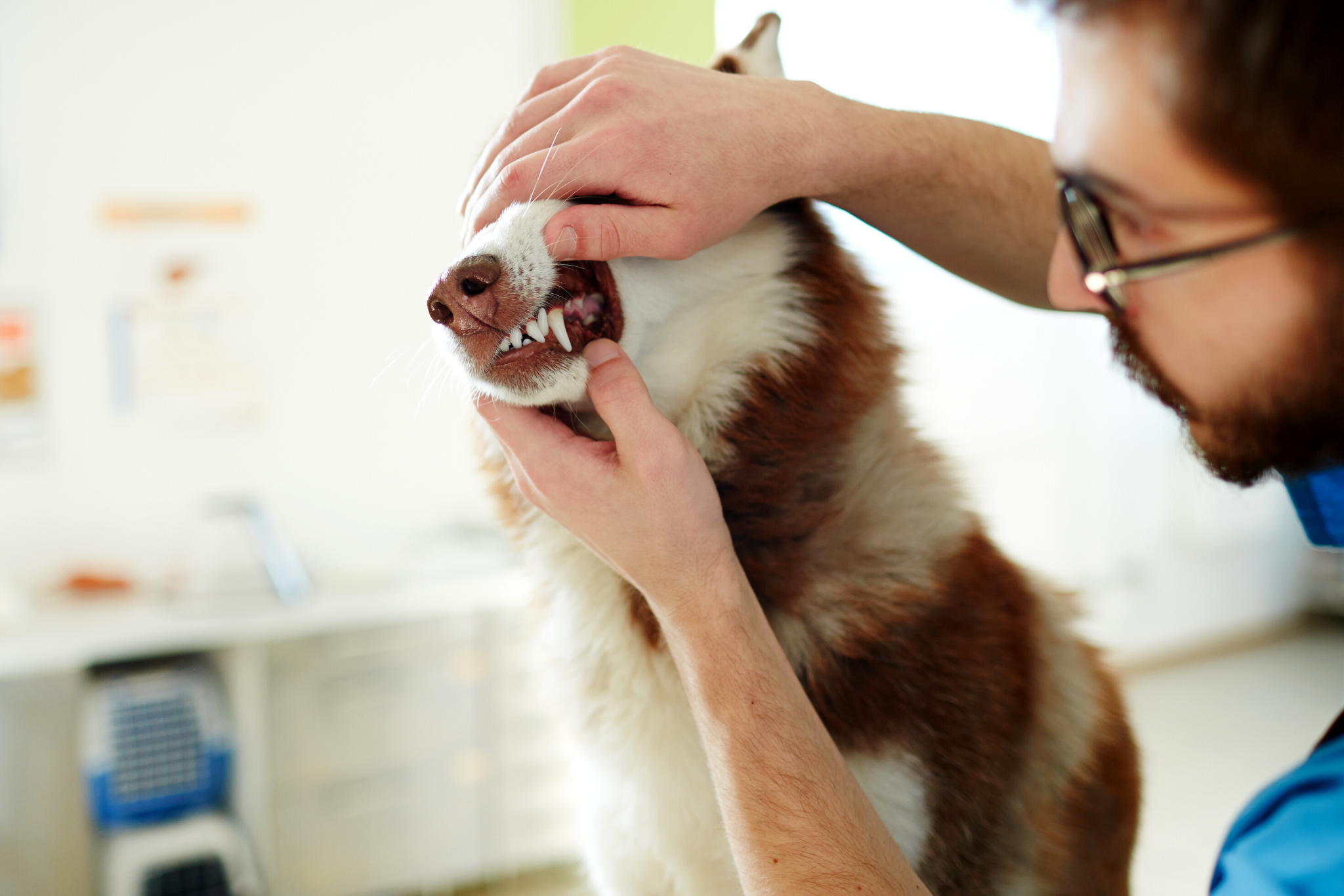

Dental Health Tips For Your Dog
We know the importance of brushing our teeth, but what about our pets? Did you know that dogs can get cavities, gum disease and plaque build up? Yep, just like humans! Your dog’s teeth should ideally be brushed after every meal to prevent tartar build up and protect against periodontal disease. If you haven’t gotten your dog accustomed to teeth brushing as a puppy, it’s not too late to start. Here are a few helpful dental health tips for your dog.
- Get your dog used to having their mouth open when you need to check their teeth or mouth. The more you do this, the more patient and calm your dog will be when brushing. It might be helpful to offer them a treat for good behaviour when they let you do this.
- Head to your local Feeds’n Needs and ask our Experts to help you pick out a dog-friendly toothpaste. This is an important step to take, as human brands contain fluoride which isn’t healthy for your pet to swallow and can be toxic. Many toothpaste for pets come in a variety of flavours, some similar to their favourite treats, such as beef, chicken, bacon and more.
- Pick a soft toothbrush for your dog, to ensure their gums don’t damage during brushing. There is a large selection of options, but opt for one with an angled tip, making it easier for you to reach the back of your dog’s mouth. Many pet owners use toothbrushes made for babies, as they are smaller and less intrusive in your dog’s mouth. If your dog is used to having your fingers in their mouth, you could consider purchasing a finger brush slip that can go over your index finger and get the job done!
Pro tip: If your dog is fussy when brushing, don’t worry too much about brushing the insides of their teeth as their tongue does a great job of keeping the inner sides of their teeth clean throughout the day. - Pick up some dental treats and kibble for your pet to help protect against disease. Greenie’s Dental Treats are a perfect choice for both dogs and cats, as they freshen breath while the treats’ textured surface helps remove tartar buildup. Ask our Experts in-store which treats they recommend!


Best Winter Bird Seed
Backyard birders should provide bird seed that is high in protein, oil, fat, and calories because higher quality food gives winter birds the most energy for keeping warm during colder weather. Offer a variety of food in different feeders to increase the size and diversity of your backyard visitors.
Keep an eye on your backyard winter flocks and adjust food supplies as needed. Limit mixes with fillers like red or golden millet, flax seed, and rape seed because winter birds consume the most nutrient rich food first, these fillers will most likely end up on the ground attracting unwelcomed critters.
Sunflower Seeds
Black Oil Sunflower Seed: Black oil sunflower seeds top the list for winter feeding. These sunflower seeds attract a variety of bird species including black-headed grosbeaks, chickadees, house sparrows, northern flickers, and song sparrows. Unlike striped sunflower seeds, black oil sunflower seeds have a thinner shell making them easier for smaller birds to break through them. These seeds are rich in oil and a high source of calories, making them a popular feeder option year-round.
Offer black oil sunflower seeds in hopper feeders, wide-mouthed tube feeders, broad mesh feeders, open trays, dishes, and platform feeders.
Striped Sunflower Seed: Striped sunflower seed are a great source of fat and oil. The hulls on striped sunflowers are thicker and harder than black oil sunflower seed. This seed is popular with larger bird species such as cardinals, blue jays, and grackles.
Offer striped sunflower seeds in hopper feeders, wide-mouthed tube feeders, broad mesh feeders, open trays, dishes, and platform feeders.
Hulled Sunflower Seed: Hulled sunflower seed is popular with songbirds including finches, titmice, chickadees, sparrows, and cardinals. These seeds are rich in oil and a high source of calories, making them a popular feeder option year-round.
Offer hulled sunflower seeds in hopper feeders, wide-mouthed tube feeders, broad mesh feeders, open trays, dishes, and platform feeders.
Other Bird Seeds
Safflower Seed: Safflower seeds are white seeds and a favorite among doves and cardinals, though other birds will also feed on safflower seeds if sunflower seeds are not available. This seed is somewhat bitter tasting making it a good choice to detract unwanted critters and feeders with a pest problem.
Offer safflower seeds in hopper feeders, wide-mouthed tube feeders, broad mesh feeders, open trays, dishes, and platform feeders.
Nyjer Seed: Nyjer seed is rich in oil, fat, and protein. It is a favorite among small birds including siskins, goldfinches, redpolls, and juncos. Quail and larger finches often feed on the ground beneath Nyjer feeders, cleaning up spilled seed. Nyjer is more expensive compared to larger seed but has good economic value due to its lack of waste.
Nyjer (or Thistle) seed is very light and best offered in feeders with small openings. Narrow-mouthed tubes and metal or nylon mesh feeders are ideal.
Suet Blocks: Suet blocks are a great energy source for backyard birds particularly in colder temperatures. These densely packed fat and seed blocks give backyard birds extra energy reserves to keep them warm and refueled during cooler weather. There are a variety of birds from chickadees to woodpeckers that enjoy this satisfying snack.
Winter is a perfect time for hanging suet feeders as the colder temperatures keep suet from turning rancid. Suet blocks can be hung from trees (sometimes in onion bags or half inch hardware cloth basket) or in cage feeders.
Winter Treats
Cracked Corn: Cracked corn is popular for large ground-feeding birds such as starlings and grackles, as well as pheasants, wild turkeys, and ducks. It has a good source of oil and starch, is inexpensive and can be used to tempt larger birds away from more expensive seeds.
Offer cracked corn in a variety of ways including large platform or dish feeders, sprinkled directly on the ground, or mixed in with other seed.
White Proso Millet: White proso millet is a grass seed that is particularly popular with small birds. Millet is high in starch, protein, fiber, and fat, making it a great energy source for small birds in winter. It is particularly favored by towhees, sparrows, finches, juncos, and buntings among others.
Offer millet in small tube and hopper feeders, open platforms, or dish feeders.
Nuts: Nuts in their natural state are packed full of fat and protein, providing birds with plenty of energy to generate more body heat. Woodpeckers, blue jays, chickadees, titmice, nuthatches, cardinals, and finches are among some of the frequent flyers that will enjoy this tasty treat. Ensure nuts are deshelled and unsalted, as salt is highly toxic to wild birds. It is advisable to purchase nuts from a pet store as bird feed promoted for wild bird to guarantee nuts do not contain any harmful ingredients.
Offer nuts in open platforms or dish feeders, wire mesh feeder for peanuts, or sprinkled on the ground.
Related Articles
Winter Backyard Bird Enthusiasts
Feeding Wild Birds in Winter
Best Winter Bird Feeders
How To Properly Store Bird Seed
Keep Feeding Areas Clean and Maintained
Keep Backyard Birds Healthy in Winter
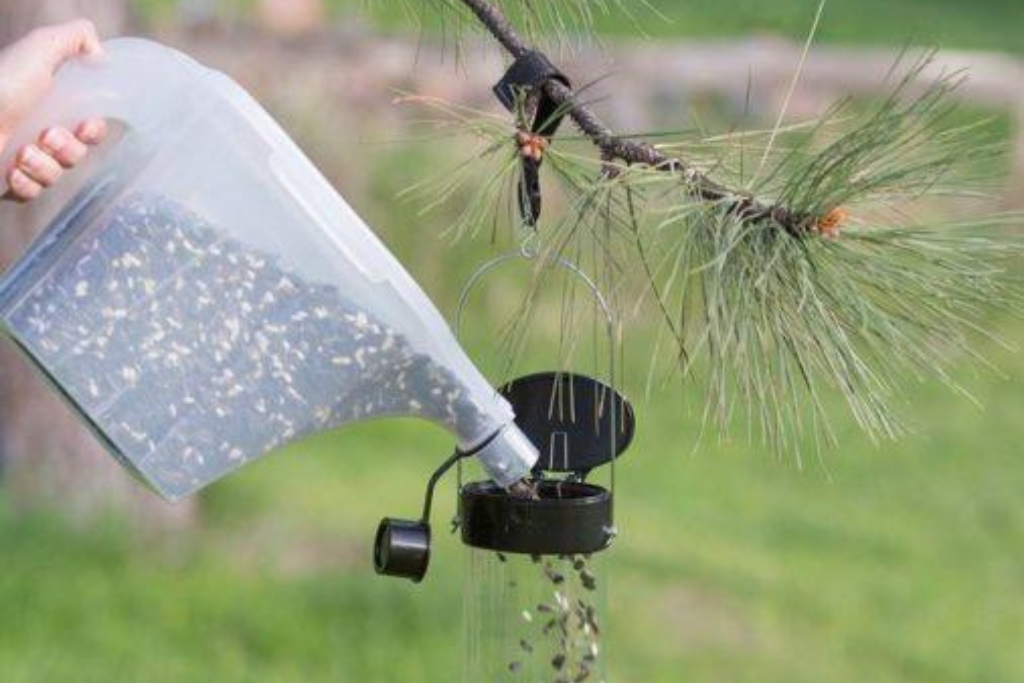
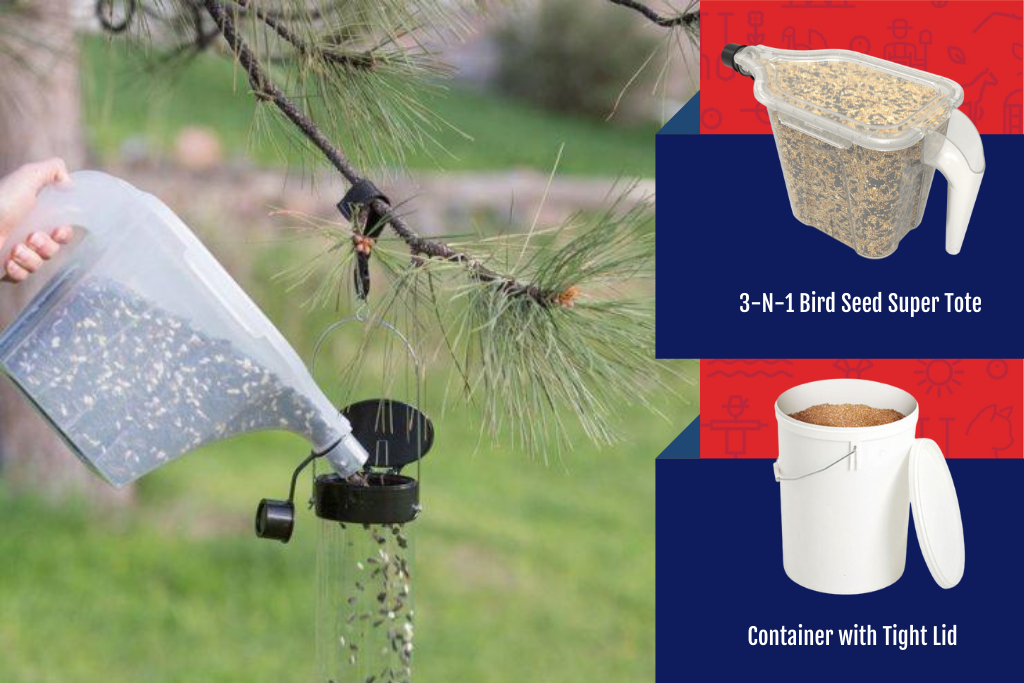
How to Properly Store Bird Seed
Bird seed can spoil, so it is important to know how to store bird seed properly. Clumps indicate moisture and should not be used. Infestations of rodents or insects, foul-smells, or mold growth are all telltale signs that bird seed has gone bad and should be discarded immediately. Light coloration may indicate old seed or diminished nutrients and it is advisable to replace it.
Knowing how to properly store bird seed can make all the difference in how long it stays fresh. Here are some helpful tips:
- Remove unused bird seed from its original packaging and place in an airtight plastic container or bin with a secure lid.
- Store in a cool, dry area away from harmful chemicals and pesticides.
- Label the type of bird seed and date of purchase.
- Use your oldest seed first and buy in moderation, enough for use up to a month.
- Check for signs of damage or other indications of spoilage before using.
- Filling feeders for only a few days’ worth of seed at a time, ensures less spoilage due to wet weather conditions.
- Clean feeders regularly to ensure a healthy and safe environment for birds to feed.


